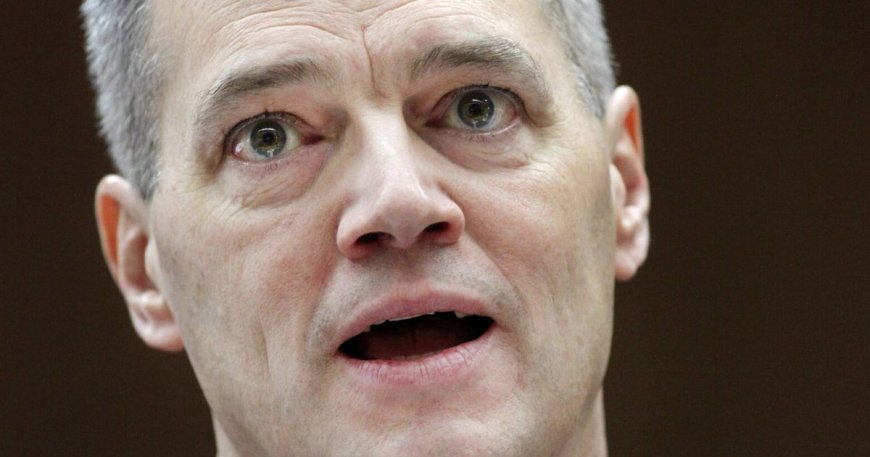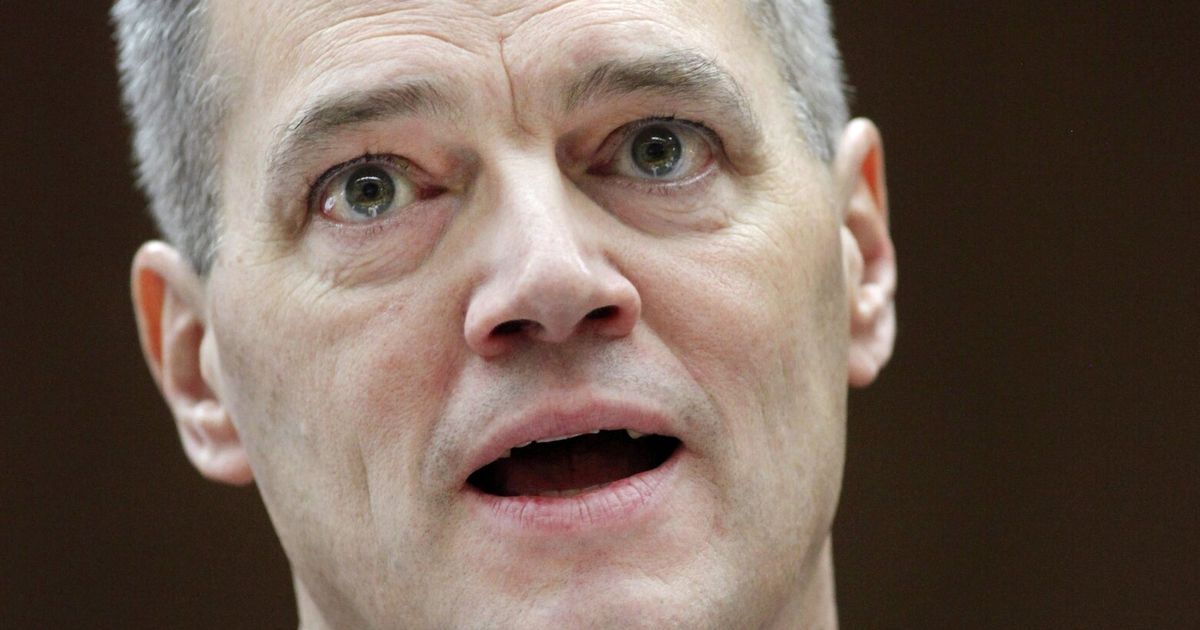Child welfare workers push Inslee to fire head of Department of Children, Youth and Families
Child welfare workers push Inslee to fire Department of Children, Youth and Families Secretary Ross Hunter The Seattle Times

Unionized Workers at the Department of Children, Youth and Families Launch No-Confidence Vote Against Secretary Ross Hunter

Unionized workers at the state Department of Children, Youth and Families have launched a no-confidence vote against their boss, DCYF Secretary Ross Hunter, urging Gov. Jay Inslee to fire and replace him.
Background
The long-simmering revolt stems from what workers contend is Hunter’s “ignorance about the work we do and indifference to the issues we raise, all of which have put children and staff at risk,” according to a summary of their grievances posted on the state employee union website.
Hunter, a former Microsoft manager and former state representative from Medina, has led DCYF since the cabinet-level department was created in 2017 to centralize the state’s child-focused programs, including early education, foster care and Child Protective Services.
Challenges Faced by Workers
In interviews, union members who work at DCYF emphasized they started the no-confidence petition only after years of frustration and unsuccessful efforts to get Hunter to address their concerns over caseloads, turnover, and unsafe working conditions.
- Workers have low morale due to a lack of understanding from leadership.
- Caseworkers face heavy caseloads that have significantly worsened in recent years.
- Staff burnout and high turnover rates affect the agency’s ability to serve children and families adequately.
DCYF has one of the highest staff turnover rates among state agencies, with 18% of employees leaving in the 2022 fiscal year, up from 11.5% the previous year, according to the state Office of Financial Management.
Response from DCYF and Governor’s Office
Hunter, through a spokesperson, declined an interview request about the no-confidence vote and discontent among department employees.
“We acknowledge the challenge and demands of the work in child welfare and take concerns of staff seriously. Secretary Hunter has been communicating with both the union and individual employees. He will continue to engage employees on the challenges identified,” DCYF spokesperson Jason Wettstein said in an email.
Inslee spokesperson Mike Faulk said in an email the governor’s office has not been presented with the no-confidence petition, “but in the event we do we will consider it like any other.”
DCYF “does challenging work and Secretary Hunter’s leadership has been integral to their efforts to serve Washingtonians,” Faulk added.
Incidents and Timeline
The union has cited incidents dating back to 2018, including staff assaulted by youths, a lack of adequate response to concerns about pay and working conditions, and comments by Hunter viewed as unsupportive or puzzling.
In a September 2022 meeting of the DCYF Oversight Board, for example, Hunter was asked what he was doing to make staff feel supported.
“Probably not enough,” he said, blaming the COVID-19 pandemic for restricting his ability to visit field offices in recent years and saying he looked forward to doing that more now that the pandemic had somewhat faded.
“I am not the world’s touchiest-feeliest human being,” he added.
Current Status and Conclusion
The petition is seeking two-thirds of DCYF’s 2,800 union-represented employees to endorse the no-confidence vote, at which point it would be officially delivered to Inslee. The effort, which began in late June, is about halfway to that goal, according to Obelcz.
Mike Yestramski, president of WFSE, said the state employee union has followed a strict process for such no-confidence votes to ensure they don’t take the step lightly.
“It is the opposite of, ‘The buck stops here.’ It is, ‘The buck stops with everybody else,’” he said.
“We have other things we’d rather spend our time on. But when you have tried all your other alternatives, you have got to go with what you’ve got,” Yestramski said. “It’s an extreme response to an extreme situation.”
SDGs, Targets, and Indicators
-
SDG 3: Good Health and Well-being
- Target 3.2: By 2030, end preventable deaths of newborns and children under 5 years of age, with all countries aiming to reduce neonatal mortality to at least as low as 12 per 1,000 live births and under-5 mortality to at least as low as 25 per 1,000 live births.
- Indicator: None mentioned in the article.
-
SDG 4: Quality Education
- Target 4.1: By 2030, ensure that all girls and boys complete free, equitable, and quality primary and secondary education leading to relevant and effective learning outcomes.
- Indicator: None mentioned in the article.
-
SDG 5: Gender Equality
- Target 5.5: Ensure women’s full and effective participation and equal opportunities for leadership at all levels of decision-making in political, economic, and public life.
- Indicator: None mentioned in the article.
-
SDG 8: Decent Work and Economic Growth
- Target 8.5: By 2030, achieve full and productive employment and decent work for all women and men, including for young people and persons with disabilities, and equal pay for work of equal value.
- Indicator: None mentioned in the article.
-
SDG 10: Reduced Inequalities
- Target 10.2: By 2030, empower and promote the social, economic, and political inclusion of all, irrespective of age, sex, disability, race, ethnicity, origin, religion, or economic or other status.
- Indicator: None mentioned in the article.
-
SDG 16: Peace, Justice, and Strong Institutions
- Target 16.6: Develop effective, accountable, and transparent institutions at all levels.
- Indicator: None mentioned in the article.
Table: SDGs, Targets, and Indicators
| SDGs | Targets | Indicators |
|---|---|---|
| SDG 3: Good Health and Well-being | Target 3.2: By 2030, end preventable deaths of newborns and children under 5 years of age, with all countries aiming to reduce neonatal mortality to at least as low as 12 per 1,000 live births and under-5 mortality to at least as low as 25 per 1,000 live births. | None mentioned in the article. |
| SDG 4: Quality Education | Target 4.1: By 2030, ensure that all girls and boys complete free, equitable, and quality primary and secondary education leading to relevant and effective learning outcomes. | None mentioned in the article. |
| SDG 5: Gender Equality | Target 5.5: Ensure women’s full and effective participation and equal opportunities for leadership at all levels of decision-making in political, economic, and public life. | None mentioned in the article. |
| SDG 8: Decent Work and Economic Growth | Target 8.5: By 2030, achieve full and productive employment and decent work for all women and men, including for young people and persons with disabilities, and equal pay for work of equal value. | None mentioned in the article. |
| SDG 10: Reduced Inequalities | Target 10.2: By 2030, empower and promote the social, economic, and political inclusion of all, irrespective of age, sex, disability, race, ethnicity, origin, religion, or economic or other status. | None mentioned in the article. |
| SDG 16: Peace, Justice, and Strong Institutions | Target 16.6: Develop effective, accountable, and transparent institutions at all levels. | None mentioned in the article. |
Behold! This splendid article springs forth from the wellspring of knowledge, shaped by a wondrous proprietary AI technology that delved into a vast ocean of data, illuminating the path towards the Sustainable Development Goals. Remember that all rights are reserved by SDG Investors LLC, empowering us to champion progress together.
Source: seattletimes.com

Join us, as fellow seekers of change, on a transformative journey at https://sdgtalks.ai/welcome, where you can become a member and actively contribute to shaping a brighter future.







